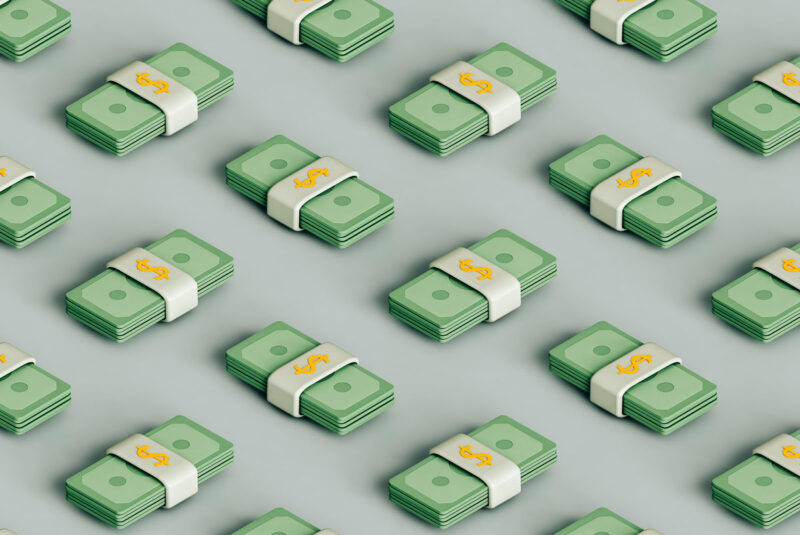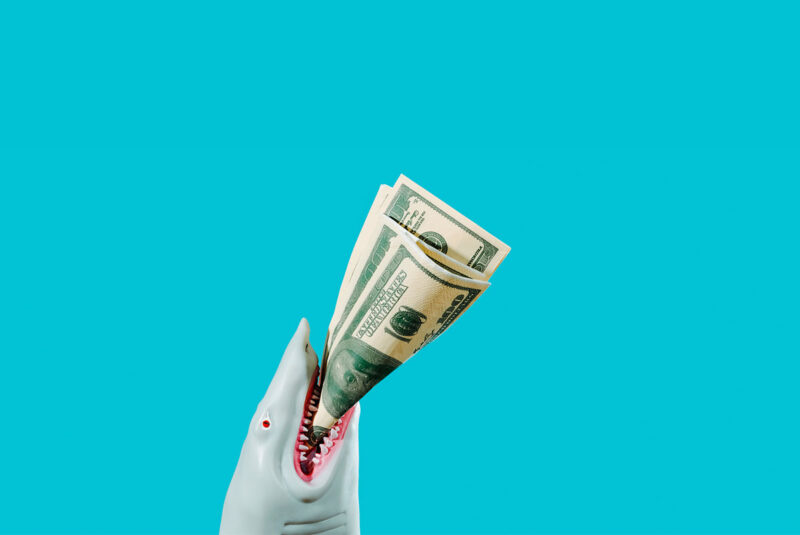You probably already know that a credit score is a three-digit number lenders use to help them predict a borrower’s ability to repay a loan. You probably also know that to build credit, you have to use credit. But do you know how your score is calculated and the best ways to improve it?
Your credit mix (aka credit diversity) is an important piece of credit data that’s used to calculate your credit score. Lenders want to see that you can handle different types of credit accounts well. A good credit mix will help boost your score.
But what are the different types of credit? We’ll explain the three main types of credit and how they affect both your credit report and your credit score.
What Are the 3 Main Types of Credit?
The three main types of credit are revolving credit, installment credit and open credit. Student loans, mortgages, credit cards, personal loans, utility bills and auto loans are all forms of different credit accounts.
Revolving credit accounts
Revolving credit, also known as open-end credit, is the most common form of credit.
With revolving credit, you receive a line of credit with a preset limit you repeatedly borrow from and repay. As you repay what you owe, you can continue to borrow from the line of credit.
You only pay interest on what you borrow, and you make minimum monthly payments to keep your account in good standing.
Think of your revolving credit account as a water bottle. You can drink as much water as you want, but you need to refill the water bottle to keep drinking.
In the same way, you can draw from your revolving credit account as many times as you want, but you need to add cash to your account to refill your line of credit and borrow again.
Examples of revolving credit
Here are some of the most common forms of revolving credit:
- Credit cards: Credit cards let you conveniently access your revolving line of credit to make purchases, transfer balances or get cash advances. Credit cards are the most widely used form of revolving credit.
- Branded store cards: A store card is a credit card that can only be used at a specific store. They usually offer store rewards and might have minimal fees.
- Personal lines of credit: Personal lines of credit work almost exactly like credit cards – except there is no physical card. There is a predetermined amount of money you can borrow from that becomes available once you’ve paid it back. A personal line of credit can be a good option for ongoing projects with periodic expenses or other recurring bills.
- Home equity lines of credit (HELOCs): A HELOC is a line of credit that uses your home’s equity as collateral. A set amount of equity in your home is available for you to borrow.
Installment credit accounts
With installment credit accounts, also known as closed-end credit, you get a lump sum of money and pay it off with interest on a fixed schedule. The interest you pay is calculated using the market interest rate, the amount you’re borrowing and the time it will take to repay the loan. The lower any of these factors are, the lower your overall cost will be.
Even though installment credit accounts have fixed payment schedules, you can pay extra each month to pay off your loan faster. Paying off a loan early will decrease the amount you pay in interest over the life of the loan, but it may hurt your credit score in the short term.
- Credit mix: Credit diversity makes up 10% of your credit score.[1] A strong credit mix features a variety of credit types, such as installment loans and credit cards. When you pay off an installment account, the account closes. If that was your only installment credit account, it could weaken your credit mix.
- Credit history: Your credit history makes up 15% of your credit score.[1] Fully paying off an installment loan is typically good for your finances, but you’ll no longer be contributing to your history of making on-time payments, which helps your credit score.
Installment credit accounts are generally used for big expenses, like buying a home. The most common types of installment loans are student loans, auto loans and mortgage loans.
Open credit accounts
Here’s how an open credit account works: A business agrees to provide a product or service with the guarantee that you’ll pay later.
Back in the day, this kind of arrangement was popular with local businesses, like your neighborhood grocer or butcher.
Today, the most common examples of open credit accounts are utility and cell phone bills. You usually use these services and settle up your bill at the end of the month. And unlike installment and revolving credit accounts, open credit accounts typically don’t charge interest.
Typically, open credit accounts aren’t reported to the credit bureaus.
How Does Each Type of Credit Affect My Credit Score?
Take it back to your high school history class. Oh, we endured our fair share of tests, but we knew pop quizzes didn’t count as much as our final exam. It’s the same concept: Different financial factors and types of credit weigh differently on our credit scores.
The weight of each factor can be estimated, but the exact process used to calculate credit scores isn’t entirely mathematical. Here are the five factors that affect your credit score, including their weight on your score[1]:
- Payment history: 35%
- Amounts owed: 30%
- Length of credit history: 15%
- New credit: 10%
- Credit mix: 10%
Payment history
Payment history shows if you’ve been paying your bills on time. For the lender, it paints a picture of how likely it is you’ll pay back what you borrow. Your payment history is a major contributor to your credit score.
To have a strong payment history, you must make your payments on time – every time. But, we know, if it were that easy, everyone would have great credit scores.
If you haven’t tried it yet and you can afford it, one of the best ways to avoid late payments is to set up autopay. Many financial institutions will let you set up a schedule that automatically pays your bills when they’re due. Reduce your risk of forgetting to pay – set it and forget it!
Amount of debt owed
The amount you owe is another major contributor to your credit score. But, ironically, the amount you owe isn’t what’s most important. What’s most important is the amount you owe relative to your credit limit. This relationship is called your credit utilization ratio.
To calculate credit utilization, add up the credit you’ve used on all your accounts and divide it by your total credit limit. Multiply your result by 100, and you’ll get your credit utilization. Here’s an example:
- You have a $250 balance on a $500 credit card, and a $1,000 balance on a $2,000 line of credit.
- Your total debt is $1,250, and your total credit limit is $2,500.
- Your credit utilization is ($1,250 / $2,500) x 100 = 50%.
High credit utilization can send a signal to lenders that your plate is full dealing with your other debt.
What tends to impact credit utilization the most is credit cards. Let’s face it, they’re convenient. It’s easy to use them impulsively, and you can unintentionally rack up a huge balance. Sure, you pay it off over time, but you end up with high credit utilization.
It’s best to pay off your credit cards each month or keep the balance low and never use them for purchases you can’t afford.
Length of credit history
If your current love interest admitted that they have never been in a romantic relationship longer than a week, that would plant a few red flags, right?
Lenders think in much the same way. The length of your credit history is your way of showing lenders how experienced you are at managing debt. And as long as you’re making timely payments, keeping accounts open will help boost your credit score.
Open accounts generally impact your score more than closed accounts because people’s financial situations change. The most up-to-date information is the most telling information.
New lines of credit
New lines of credit may hurt your score in the short term, but they’re good for you in the long term. More accounts mean a higher credit limit and more payments reported to the credit bureaus.
Credit mix
A diversity of credit types benefits the credit mix part of your score. Also, having more accounts can be beneficial to some of the other factors used to calculate your credit score, like the amount of available credit you have available.
For example, a revolving credit account can boost your credit limit and lower your utilization if you only use a fraction of what’s available to borrow. And an installment loan is a great way to build a long credit history.
While credit mix is only 10% of your overall score, it’s still an important factor in building your credit.
Not All Credit Is Created Equal
Using different types of credit can help boost your credit score. And with a good credit score, borrowing money gets a lot less expensive. It can help you get a car, buy a house or start a business with affordable loans at very favorable terms.
Not all credit is created equal, but if you use it wisely, it can help, not harm your credit or financial health.
The Short Version
- All forms of credit fall into three main categories: revolving credit accounts (like credit cards), installment accounts (like mortgages) and open accounts (like utility bills)
- Credit scores are calculated based on payment history, amounts owed, length of credit history, new credit and credit mix. Each factor weighs differently on the overall score
- Your credit score can be improved by using a variety of credit types and making on-time payments
FICO®. “What’s in my FICO® Scores?” Retrieved February 2022 from https://www.myfico.com/credit-education/whats-in-your-credit-score




